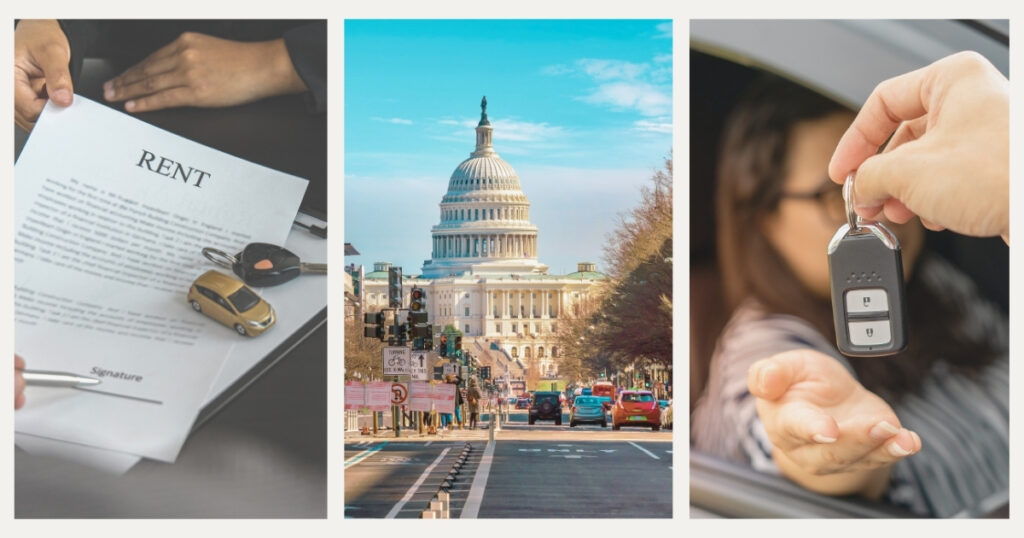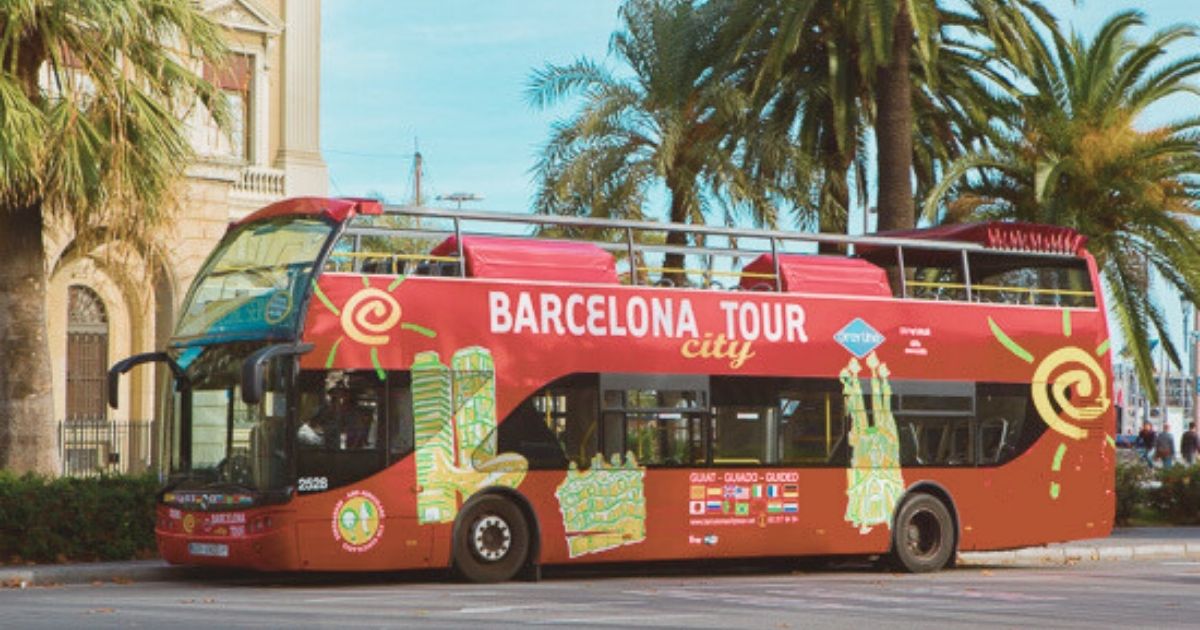The vast American landscape offers digital nomads an endless playground of possibilities, from coastal highways to mountain retreats. Understanding how to rent a car in the United States is often essential for remote workers seeking to combine productivity with exploration in a country where distances between destinations can be substantial.
With rental procedures varying between states and companies, navigating how to rent a car in the United States requires knowledge of specific requirements, insurance considerations, and payment methods. The right preparation will help you avoid unexpected costs and ensure a smooth journey across this diverse country.
In this comprehensive guide, we’ll walk you through everything you need to know about American car rentals, from documentation requirements to practical tips that will enhance your mobile workspace experience.
Essential requirements for renting a car in the United States

Before reserving your vehicle, understanding the basic requirements for how to rent a car in the United States will prevent complications at the rental counter.
Documentation and age requirements
Most US car rental companies require drivers to be at least 21 years old, though many charge a “young driver fee” for renters under 25. This surcharge can range from $25-$35 per day, significantly impacting your travel budget if you’re a younger digital nomad.
The standard documentation needed when renting a car in the United States includes:
- A valid driver’s license from your country of residence
- A major credit card in the renter’s name (debit cards often not accepted)
- Passport for international visitors
- International Driving Permit (IDP) for non-English licenses
🌟 Pro tip: make digital copies of all your important documents and store them in cloud storage accessible from your devices. This provides easy access if physical documents are lost and simplifies the process when showing proof of identity at the rental counter.
International driver considerations
For non-US digital nomads, how to rent a car in the United States often involves additional considerations. While an International Driving Permit isn’t legally required in most states, many rental companies still request one if your license isn’t in English or doesn’t use the Roman alphabet.
The IDP should be obtained in your home country before arrival in the US, as they cannot be issued once you’re abroad. This document translates your existing license information into multiple languages, including English, and must be presented alongside your original driver’s license.
💡 Did you know? Unlike many European countries where manual transmissions are common, nearly 98% of rental vehicles in the United States feature automatic transmissions. This makes driving easier for international visitors accustomed to manual vehicles, removing one potential learning curve during your American road trip.
Navigating rental companies and vehicle selection

The United States offers numerous car rental options, from major international chains to local providers with more specialized offerings.
Major rental companies vs. local alternatives
When researching how to rent a car in the United States, you’ll encounter major companies like Enterprise, Hertz, Avis, and Budget at virtually every airport. These established providers typically offer newer vehicle fleets, more pickup locations, and comprehensive customer support, though often at premium prices.
Local and regional rental companies such as Fox Rent A Car or Advantage sometimes offer significant savings, especially for longer rental periods. However, they may have more limited locations and vehicle selections. Comparison sites like Kayak, Expedia, or AutoSlash can help identify the best value across multiple providers.
Choosing the ideal vehicle for digital nomad Life
The right vehicle for your American adventure should balance comfort, fuel efficiency, and practicality for both work and exploration. SUVs provide excellent workspace potential with their larger interiors but consume more fuel. Mid-size vehicles offer a good compromise between space and economy.
When selecting your vehicle, consider:
- Interior space for comfortable working when needed
- Storage capacity for your equipment and luggage
- Fuel efficiency for long-distance travel
- Vehicle height for navigating urban parking garages
- Climate control for comfortable working conditions
🌟 Pro tip: if your nomadic journey includes national parks or remote areas, consider a vehicle with higher clearance and possibly all-wheel drive. Many scenic destinations in states like Utah, Colorado, and Montana have unpaved roads leading to the most breathtaking workspaces.
Understanding American rental pricing
When calculating the total cost of how to rent a car in the United States, the advertised rate rarely reflects the final price. Additional charges can significantly increase your expenses:
- State and local taxes (which vary dramatically by location)
- Airport concession recovery fees (10-15% at many airports)
- Vehicle license recovery fees
- Energy recovery fees
- Additional driver fees ($10-15 per day)
- Early return fees
- One-way rental premiums
Always request a complete breakdown of charges before confirming your reservation, and factor these costs into your digital nomad budget planning.
Insurance and protection considerations

Understanding insurance options is crucial when learning how to rent a car in the United States, as coverage requirements differ significantly from other countries.
Navigating the American insurance landscape
Car rental insurance in the United States can be confusing, with multiple coverage types offered at the counter:
- Collision Damage Waiver (CDW)/Loss Damage Waiver (LDW): removes or reduces your financial responsibility if the rental car is damaged or stolen
- Liability Insurance: covers damage to other vehicles or property
- Personal Accident Insurance: covers medical costs for the renter and passengers
- Personal Effects Coverage: protects belongings in the vehicle
Before purchasing rental counter insurance, check if your existing coverage applies:
- Credit card rental benefits (many premium cards offer CDW coverage)
- Your personal auto insurance policy (may extend to rentals)
- Travel insurance that includes car rental protection
Having reliable connectivity throughout your road trip is essential for digital nomads. A travel eSIM from Holafly ensures uninterrupted internet access across the United States, allowing you to work from scenic locations, navigate unfamiliar routes, and stay connected to clients regardless of your location.
Protecting your digital nomad equipment
Standard rental insurance rarely provides adequate coverage for expensive equipment digital nomads carry. When researching how to rent a car in the United States, pay special attention to personal effects coverage limits.
Key considerations for protecting your work equipment:
- Check if your existing insurance (travel or equipment) covers theft from vehicles
- Never leave valuable equipment visible in the car
- Remove all equipment when parking overnight
- Consider separate gadget insurance for comprehensive protection
- Use hotel safes for equipment storage when practical
🌟 Pro tip: for maximum security in urban areas, choose accommodations with secure parking facilities. Street parking significantly increases the risk of break-ins, particularly in cities like San Francisco, Chicago, and New York where theft from vehicles is more common.
Practical driving tips for digital nomads in America

Once you’ve mastered how to rent a car in the United States, understanding local driving practices will ensure a smooth journey.
Understanding American road rules
US driving regulations have several important distinctions international visitors should note:
- Drive on the right side of the road
- Distances and speeds are measured in miles and miles per hour
- Right turn on red is permitted after stopping (unless specifically prohibited)
- Four-way stops function as roundabouts, with first-to-arrive having priority
- Cell phone use while driving is restricted in most states
- Seat belts are mandatory for all passengers
American speed limits vary by state and road type but typically range from 25-35 mph in urban areas, 45-55 mph on highways, and 65-75 mph on interstates. Speed limits are strictly enforced in many areas, and fines can significantly impact your travel budget.
Optimizing the mobile work environment
For digital nomads, a rental car often doubles as a mobile office. Consider these strategies for creating an effective workspace:
- Use dashboard mounts for tablets or phones when navigating
- Invest in a power inverter to charge laptops (connects to 12V outlet)
- Pack a laptop stand for ergonomic working during breaks
- Consider noise-canceling headphones for concentration in busy areas
- Plan your route to include suitable work locations like scenic viewpoints, libraries, or quiet parks
Final thoughts on car rentals for travelers in America
Learning how to rent a car in the United States provides digital nomads with incomparable freedom to create personalized workation experiences. From California’s coastal highways to New England’s charming villages, having your own transportation transforms your relationship with this vast country.
While navigating the rental process requires attention to documentation, insurance, and local regulations, the independence gained is invaluable for remote workers seeking to combine productivity with meaningful exploration. The flexibility to discover hidden gems beyond tourist areas and create impromptu workspace changes keeps both creativity and motivation flowing.
Remember that America’s car culture makes driving the most practical way to experience the country’s diversity. Public transportation options outside major urban centers are often limited, making vehicle rental an essential component of a successful US-based digital nomad experience.
Ready to explore America’s diverse landscapes while maintaining your remote work lifestyle? For more insights on balancing productivity with travel, check out our guide to setting up mobile workspaces tailored to the digital nomad experience.
Your American road trip adventure begins with Nomada 👉
Stay connected while you travel with Holafly’s eSIM 🌍
Getting ready for a trip and want to forget about roaming charges, physical SIM cards, or unreliable public WiFi? With Holafly’s eSIM, staying online in over 160 countries is easier than ever.
With Holafly, you’ll enjoy:
📲 Instant activation: just scan a QR code and you’ll have data at your destination.
🌐 Global coverage: available in 160+ countries, including top tourist spots and major business hubs.
📅 Flexible plans: choose daily, weekly, or monthly options based on your travel needs.
❌ No physical SIM required: keep your current SIM in place, no local procedures needed.
💬 Multilingual support: get fast, clear assistance whenever you need it.
Browse securely without relying on public networks, access maps, apps, bookings, and work remotely without interruptions.
Set it up once and easily pause or switch profiles as needed, saving battery and managing your data usage.
📵 Say goodbye to roaming fees and hello to a simple, secure connection—without surprises on your bill.
Does your phone support eSIM? Then Holafly is the perfect travel companion to stay connected wherever you go.
Frequently asked questions about renting cars in the United States
Yes, visitors can rent cars with their valid foreign driver’s license. If your license isn’t in English, an International Driving Permit is highly recommended when figuring out how to rent a car in the United States, as many rental companies require it as a translation document.
While some companies accept debit cards, they typically impose additional restrictions, including credit checks, higher security deposits, and proof of return travel. Major rental companies at airports often require a credit card for the initial reservation.
You’re responsible for all traffic violations during your rental period. Rental companies typically charge an administrative fee ($25-50) for processing tickets in addition to the actual fine. Some violations may be forwarded to collection agencies if left unpaid.
Most major rental companies allow travel to Canada with standard rentals. Mexico typically requires additional insurance and prior authorization. Always notify the rental company of cross-border plans when learning how to rent a car in the United States that will travel internationally.
Most standard rentals include unlimited mileage, but always confirm this when booking. Some economy rates or specialty vehicles may have daily mileage limits with substantial fees for exceeding them, which can significantly impact costs for road-tripping digital nomads.




